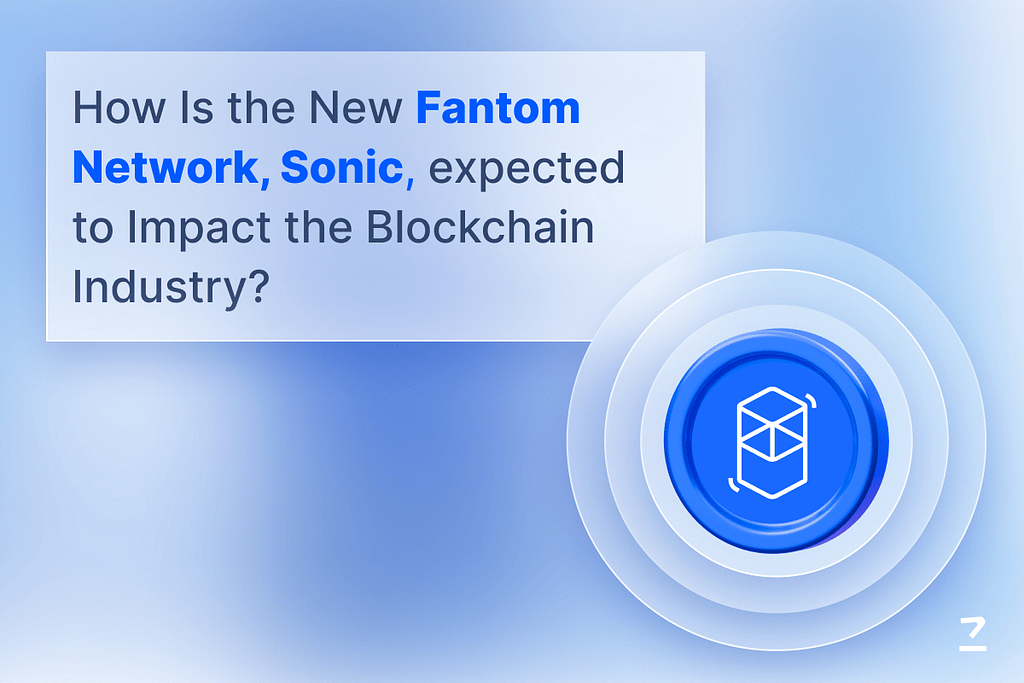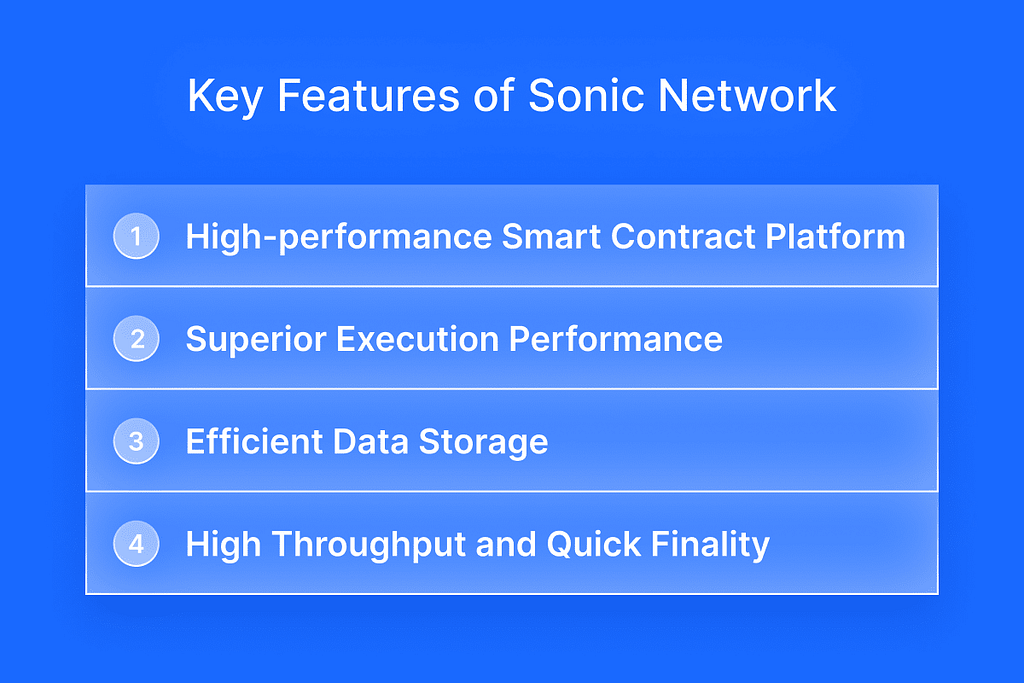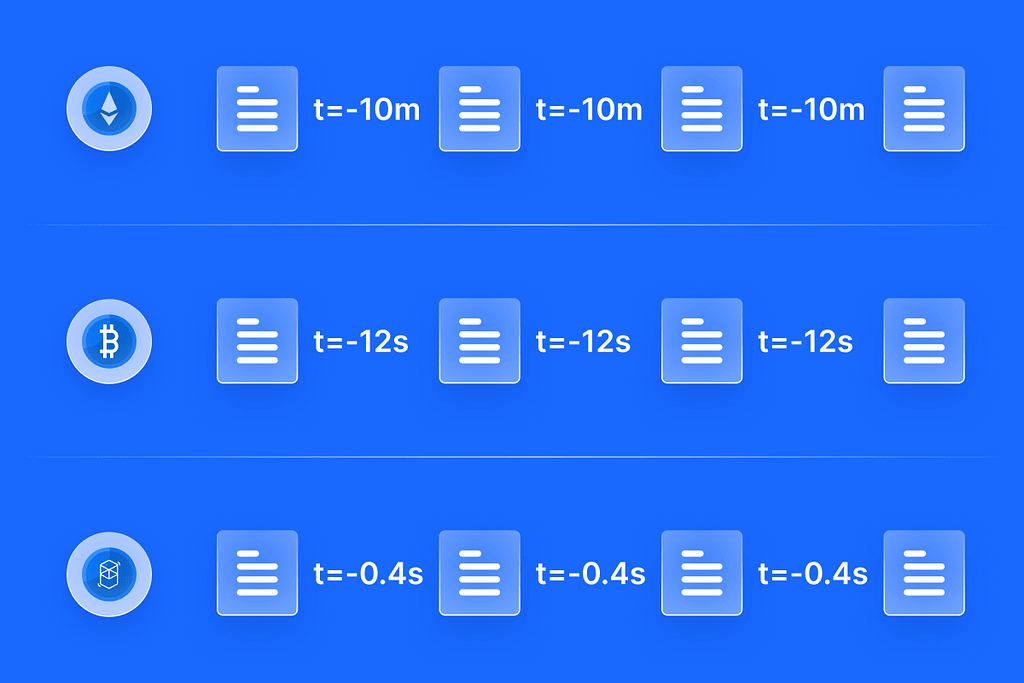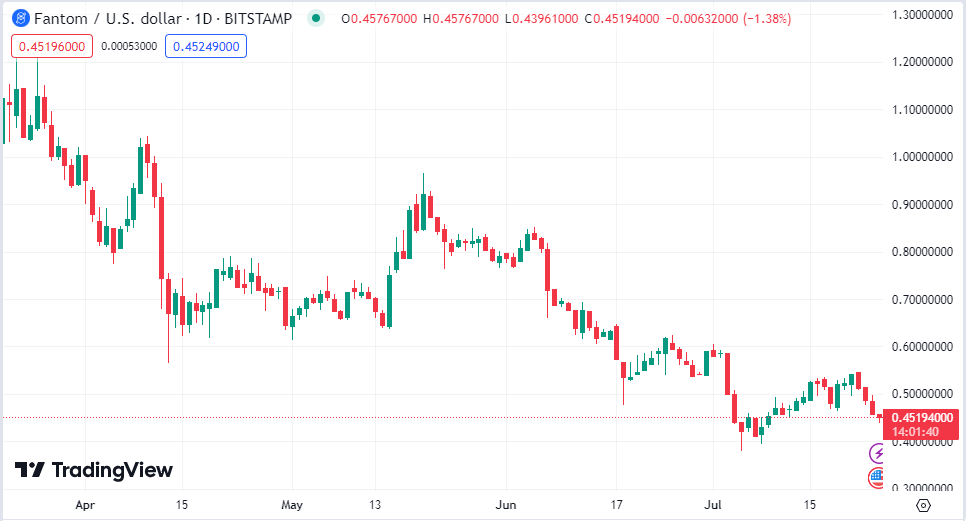
Fantom has carved a notable position as a high-performance, directed acyclic graph (DAG)-based smart contract platform. It aimed to create a fast, scalable, and cost-efficient platform that addressed the shortcomings of existing blockchain networks like Ethereum.
Fantom recently announced the launch of its transformative layer-1 blockchain, Sonic. Designed by Professor Bernhard Scholz and led by DeFi pioneer Andre Cronje, Sonic represents a significant advancement in blockchain technology.
Sonic shows strong promise in tackling the core challenges of scalability, security, and decentralization that have obstructed the widespread adoption of blockchain.
So how will Sonic’s introduction impact the broader blockchain industry? Let’s find out!
Overview of the Sonic Network
What is Sonic?
Sonic is a next-generation layer-1 blockchain developed as part of the Fantom ecosystem. It is designed to enhance the capabilities of its predecessor, the Opera chain. This innovative network features a native layer-2 bridge, facilitating interoperability with other blockchains, particularly Ethereum. Sonic aims to deliver exceptional performance characterized by its impactful set of features, making it a promising option for developers and users alike.

Key Features
- High Throughput: Sonic is anticipated to achieve over 2,000 transactions per second (TPS), significantly surpassing the 200 TPS of the previous Opera chain. This increase in transaction capacity positions Sonic to handle a wide array of applications, from decentralized finance (DeFi) to gaming.
- Low Transaction Costs: By optimizing network efficiency, Sonic reduces the costs associated with transactions, making it economically viable for users and developers to engage with the platform.
- Improved Scalability: Sonic’s architecture allows for greater scalability without the complexities associated with sharding, allowing the network to grow and adapt to increasing demands.
Technological Innovations
The architecture of Sonic has been carefully designed by Professor Bernhard Scholz, incorporating several technological advancements that set it apart from traditional blockchain models. At the core of Sonic’s functionality is the optimized Lachesis consensus mechanism, which combines asynchronous Byzantine fault tolerance (aBFT) with directed acyclic graphs (DAGs). This innovative approach provides several advantages.
- Asynchronous Processing: Validators can process transactions independently, which eliminates the need for sequential block production and accelerates transaction times.
- Instant Finality: Transactions are confirmed within 1 to 2 seconds, leading to quick and reliable transaction processing.
- Scalability: The combination of aBFT and DAGs allows Sonic to scale transaction throughput without increasing the risk of centralization.
Performance metrics from the Sonic testnet indicate promising results, with an expected throughput of over 2,000 TPS and a time to finality of around one second. These advancements position Sonic as an effective solution for high-frequency blockchain app development.

Sonic’s Integration with Ethereum
Layer-2 Bridge Functionality
Sonic’s integration with Ethereum is facilitated through a native layer-2 bridge, which allows effective connectivity between the two networks. This functionality is crucial as it allows Sonic to tap into Ethereum’s vast ecosystem, including its liquidity, user base, and a wide array of decentralized applications (dApps). By connecting to Ethereum, Sonic can provide users with direct access to native ETH and other Ethereum-based assets, boosting its utility and appeal.
The benefits of this integration are manifold. First, it allows developers on Sonic to tap into Ethereum’s established protocols and liquidity pools, making it easier to execute smart contract development and create and deploy dApps that can interact with both networks. Additionally, users can benefit from the enhanced security features of the layer-2 bridge while enjoying the low transaction costs and high throughput that Sonic offers.
Improving User Experience
The integration of Sonic with Ethereum has substantial implications for end-users. One of the primary advantages is the reduction in transaction costs. Sonic’s architecture is designed to minimize fees, making it economically attractive for users to engage in transactions and utilize dApps. Coupled with Sonic’s high-speed processing capabilities, which allow for transactions to be finalized in approximately one second, users can expect a more efficient and cost-effective experience.
Furthermore, the potential for effective asset transfers between Sonic and Ethereum improves user experience. This bidirectional migration capability allows users to easily swap their assets between the two networks without incurring excessive fees or delays. As a result, Sonic not only optimizes the user journey but also promotes greater participation in the broader DeFi ecosystem, encouraging innovation and collaboration across platforms.
Governance and Ecosystem Development
The Sonic Foundation and Sonic Labs
The governance of the Sonic network is primarily managed by the Sonic Foundation, which plays a crucial role in overseeing the network’s operations and treasury management. The foundation is tasked with ensuring the long-term sustainability and growth of Sonic, facilitating the development of best practices, and maintaining the integrity of the ecosystem. This includes managing funds allocated for development, community initiatives, and partnerships that boost the Sonic network’s capabilities.
Recently, a governance vote approved compatibility and migration between $FTM and the new $S token on a 1:1 basis. This migration process ensures a seamless transition for existing Fantom users and provides a stable foundation for Sonic’s future growth.

Source: https://in.tradingview.com/chart/
In parallel, Sonic Labs focuses on promoting innovation within the ecosystem. This entity is dedicated to supporting developers in creating decentralized applications (dApps) and establishing strategic partnerships that can drive the adoption of Sonic. By providing resources, technical support, and funding opportunities, Sonic Labs aims to cultivate a vibrant community of developers and users who can contribute to the network’s growth and functionality.
Strategic Funding Initiatives
Recently, Sonic secured a significant $10 million funding round, which is pivotal for its development and expansion efforts. This funding will be instrumental in strengthening the network’s infrastructure, enhancing its features, and supporting community-driven projects. The capital raised will also allow Sonic to attract top talent and invest in marketing initiatives to increase awareness and adoption.
Impact on Decentralized Finance (DeFi)
Sonic’s capabilities are set to significantly elevate existing decentralized finance (DeFi) platforms by providing a sturdy infrastructure that combines high throughput, low transaction costs, and rapid finality. These features allow developers to build more efficient and user-friendly applications.
For instance, Sonic’s architecture can support efficient crypto exchange services, along with the development of perpetual decentralized exchanges (DEXs) that require high-speed trading capabilities and minimal latency. Furthermore, lending platforms can tap into Sonic’s low fees to offer more competitive interest rates, attracting a broader user base. Asset management applications can also benefit from Sonic’s scalability, helping them handle larger volumes of transactions without compromising performance. Overall, Sonic paves the way for innovative use cases in the DeFi space, creating a more dynamic and accessible financial ecosystem.
Real-World Use Cases
Sonic offers applications in various sectors such as payments, trading, and high-transaction-based games. The network’s high throughput and low costs make it an attractive option for payment solutions that require quick transaction processing and minimal fees. For example, businesses could integrate Sonic to facilitate instant payments for goods and services, improving customer experience and operational efficiency.
In the trading sector, Sonic can support high-frequency trading applications that demand rapid execution and low latency, allowing traders to capitalize on market fluctuations effectively. Furthermore, the gaming industry can tap into Sonic’s capabilities to create immersive experiences that involve real-time transactions and interactions, such as in-game asset trading or play-to-earn models.
Hypothetical scenarios illustrate Sonic’s advantages: a decentralized gaming platform could utilize Sonic to handle thousands of transactions per second, allowing players to trade assets in a hassle-free manner while enjoying low fees. Similarly, a lending protocol built on Sonic could offer instant loan approvals and disbursements, revolutionizing how users access credit.
Sonic’s Role in Enterprise Applications
Sonic’s high throughput and robust security make it a promising platform for enterprise-grade blockchain applications. Industries such as supply chain management, finance, and healthcare can substantially benefit from Sonic’s capabilities.
For instance, in supply chain management, Sonic can facilitate real-time tracking of goods, reducing inefficiencies and improving transparency. Its scalability can handle the large amount of data generated by complex supply chains, while its security guarantees the integrity of sensitive information. In the financial sector, Sonic can support high-frequency trading, clearing, and settlement, as well as secure and efficient cross-border payments. The healthcare industry can utilize Sonic for secure data sharing, patient records management, and supply chain optimization.
Furthermore, interoperability between Sonic and existing enterprise systems is crucial for successful integration. The ability to effectively connect to traditional databases, ERP systems, and other enterprise software will be essential for widespread adoption.
Sonic’s Influence on the Broader Blockchain Ecosystem
Sonic has the potential to redefine the performance benchmarks for blockchains. If successful, Sonic could inspire other blockchain platforms to explore similar architectural innovations or technological advancements to boost their scalability and efficiency.
The broader impact of Sonic extends to the overall adoption of blockchain technology. By demonstrating the capability of blockchain to handle real-world applications with high transaction volumes and demanding performance requirements, Sonic can help bridge the gap between blockchain technology and mass adoption. As more developers and enterprises witness the capabilities of Sonic, it could lead to increased interest and investment in the blockchain ecosystem.
Community Engagement and Ecosystem Growth
Building a robust community around the Sonic network is essential for its long-term success. To attract developers and users, Sonic employs several strategies aimed at cultivating engagement and collaboration. One key approach is the establishment of incentive programs that encourage participation from both developers and users. These may include potential airdrops of the $S token, which reward early adopters and active participants, as well as grants for developers creating innovative dApps on the Sonic platform.
Moreover, Sonic aims to create a vibrant ecosystem by organizing hackathons, workshops, and community events that facilitate knowledge sharing and collaboration among participants. By providing resources and support through initiatives like the Sonic Spark program, which offers funding and tools to Web3 innovators, Sonic seeks to cultivate a dynamic environment that attracts talent and encourages innovation.
Addressing Concerns
Despite its promising features, Sonic’s launch may face challenges and criticisms. Potential concerns include issues related to network security, scalability, and the risk of supply dilution of the $S token. To address these challenges, the Sonic Foundation has implemented strategies designed to eliminate risks and ensure a stable ecosystem.
One approach is the gradual minting of new $S tokens, which will occur on a streaming basis starting six months after the network’s launch. This method is intended to minimize the impact on the token’s market value while providing necessary funding for ongoing development and ecosystem growth. Moreover, the Sonic Foundation has committed to an innovative annual burn mechanism, removing any unused tokens from circulation, thereby supporting the token’s value over time.
Future Prospects
Sonic, with its innovative architecture, high throughput, and low transaction costs, Sonic positions itself as a legitimate competitor to other leading layer-1 solutions, such as Ethereum, Solana, and Avalanche. Furthermore, its strategic integrations provide a strong foundation for the development of high-performance dApps.
It is crucial for parties interested in the Sonic chain to engage with the community, stay informed about ongoing developments, and participate in the ecosystem. By doing so, users and developers can contribute to shaping the future of Sonic and the broader blockchain space. The potential for Sonic to drive innovation and adoption is substantial, and active participation will be key to realizing its vision.
Originally published at https://www.codezeros.com.
How Is the New Fantom Network, Sonic, expected to Impact the Blockchain Industry? was originally published in Nerd For Tech on Medium, where people are continuing the conversation by highlighting and responding to this story.








